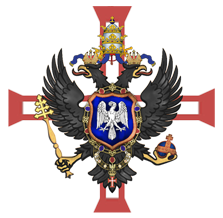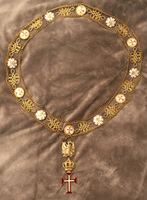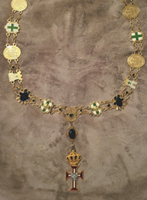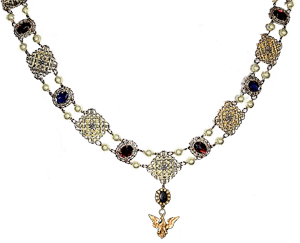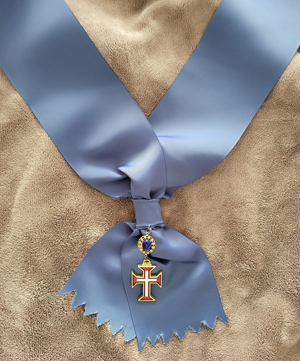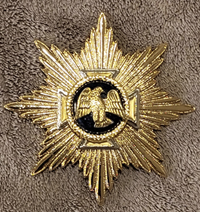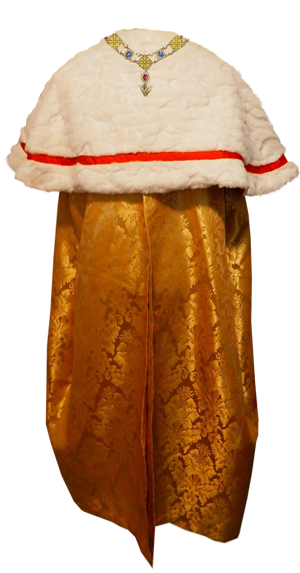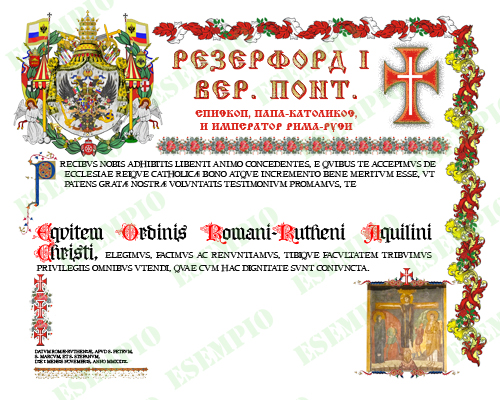|
AQUILINE ORDER OF CHRIST |
|
|
|
The Supreme Roman-Ruthenian Aquiline Order of Christ is the highest order given by the modern Stato Pontificio Imperiale di Roma-Rutenia under the authority of the United Roman-Ruthenian Church. By current policy, it is given exclusively to nobles of the rank of Count or higher, who are automatically named Bailiffs of the Most Holy Pontifical Order of the Eagle. It is from this that the common name of the order (Aquiline Order of Christ) comes. Grand Dukes of Rome-Ruthenia also receive the order on their 18th birthday and also receive the Order of Sts. George and Olga. Following the decree of December 2023, the rank of Bailiff of the Mot Holy Pontifical Order is no longer conferred as an independent honour, but only as a second honour automatically accompanying the conferral of the Aquiline Order of Christ. (Those who hold the rank of Bailiff of the Eagle independently of the Order of Christ are known as Bailiffs of Honour, a rank within the Companions of the Pontifical Order of the Eagle. Since the rank of Bailiff of hereditary, but the Order of Christ is not, beginning in 2024, all new Bailiffs of Honour are exclusively heirs of Knights and Dames of Christ.) Because the Most Holy Pontifical Order of the Eagle is given in its sole rank
of Bailiff of the Eagle jointly with the Order of Christ, and
in fact using a single brevet (document conferring the honour), the
Aquiline Order of Christ and the Order of the Eagle are inherently
united at their highest level. (There are other ranks of the Order of the Eagle
that exist independently, known collectively as the Companions of the
Pontifical Order of the Eagle.) As a result, the insignia of these two
co-honours are intertwined. There is a single breast star, as well as
two collar chains — one of the Order of Christ and one as a Bailiff of
the Mosy Holy Pontifical Order. Recipients may wear either or both collar chains.
 Solemn ritual of conferral of the Order of Christ and Most Holy Pontifical Order of the Eagle THE EAGLE AS A SYMBOL OF CHRIST
The co-honour of the Order of Christ and the rank of Bailiff of the Most Holy Pontifical Order is rooted in ancient Christian sybolism, for the eagle has long been a symbol of Christ and divine power. "They shall mount up with wings as eagles" (Isaiah 40:31). The eagle also embodies Christ's omniscience and kingly authority. Psalm 103:5 speaks of being "renewed like the eagle," which speaks to resurrection and eternal life. And, indeed Christ soars above the earthly realm while guiding the Church. The eagle is also commonly associated with imperial or royal authority. In this context, it signifies Christ as the ultimate King and Judge. THE INSIGNIA OF THE ORDER
Recipients
wear the large cross of the order from the collar chain and
the Greater Eagle of the Most Holy Pontifical Order of the Eagle from a solid red
ribbon about the neck. The small cross is worn on a gold collarette and/or on a cordon (sash) of
medium blue ribbon. The order is perhaps unique in that it makes use of
two ribbon colours for the same rank. The red represents Christ and is
the traditional colour of various Orders of Christ. The medium blue is
a variation of the blue of the Order of the Eagle and represents the
Blessed Theotokos. The sash itself, being blue with the small red cross
of the order, evokes Mary Mother of God with the infant Christ.
Although that is general imagery, there is also special reference to
the icon of the Holy Mother of God of Kazan, the history of which
reaches Rome and Russia and spans the breadth of Europe. It began with
the victory of Ivan IV over the Tatars. The icon was stolen in the
early 20th century. An icon believed to be an original 16th century
copy of the original icon was located and brought to Fátima in
Portugal. From there is was given to St. John Paul II, who kept it in
his office as Bishop of Rome. After the fall of communism, the icon was
returned to the Russian Orthodox Church in Moscow.FEAST DAYS OF THE ORDER Principle: Christ the King 2nd: Latin Christmas 3rd: Eastern Christmas Wear of Deocrations of the Pontifical and Imperial Orders
'
List of Current Members H.A.H. Prince-Bishop Radislav I, Roman-Ruthenian Pope Nota
Bene: These orders are given exclusively by the United Roman-Ruthenian
Church, Stato Pontificio Imperiale di Roma-Ruthenia as historic orders
of the Stato
Pontificio. H.H. the Bishop of Rome-Ruthenia holds the exclusive right to
confer them.
|

